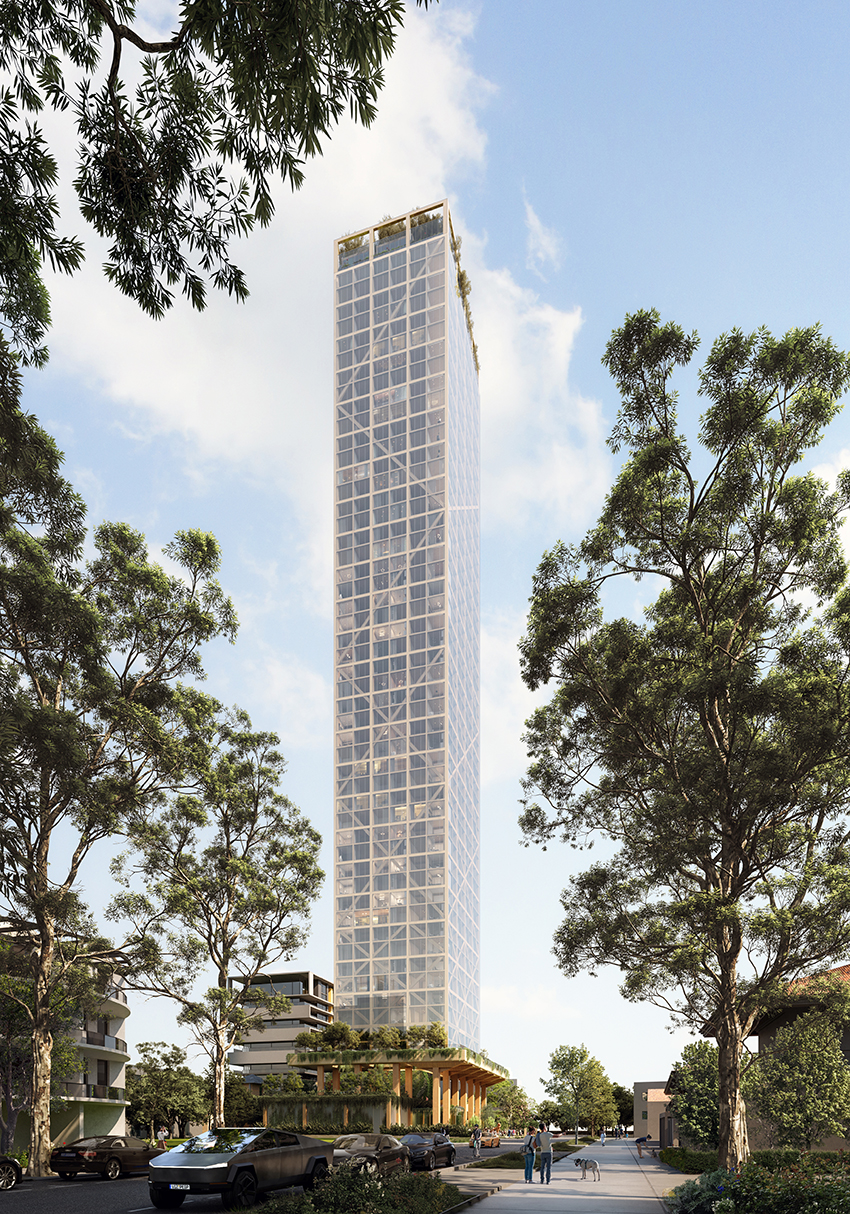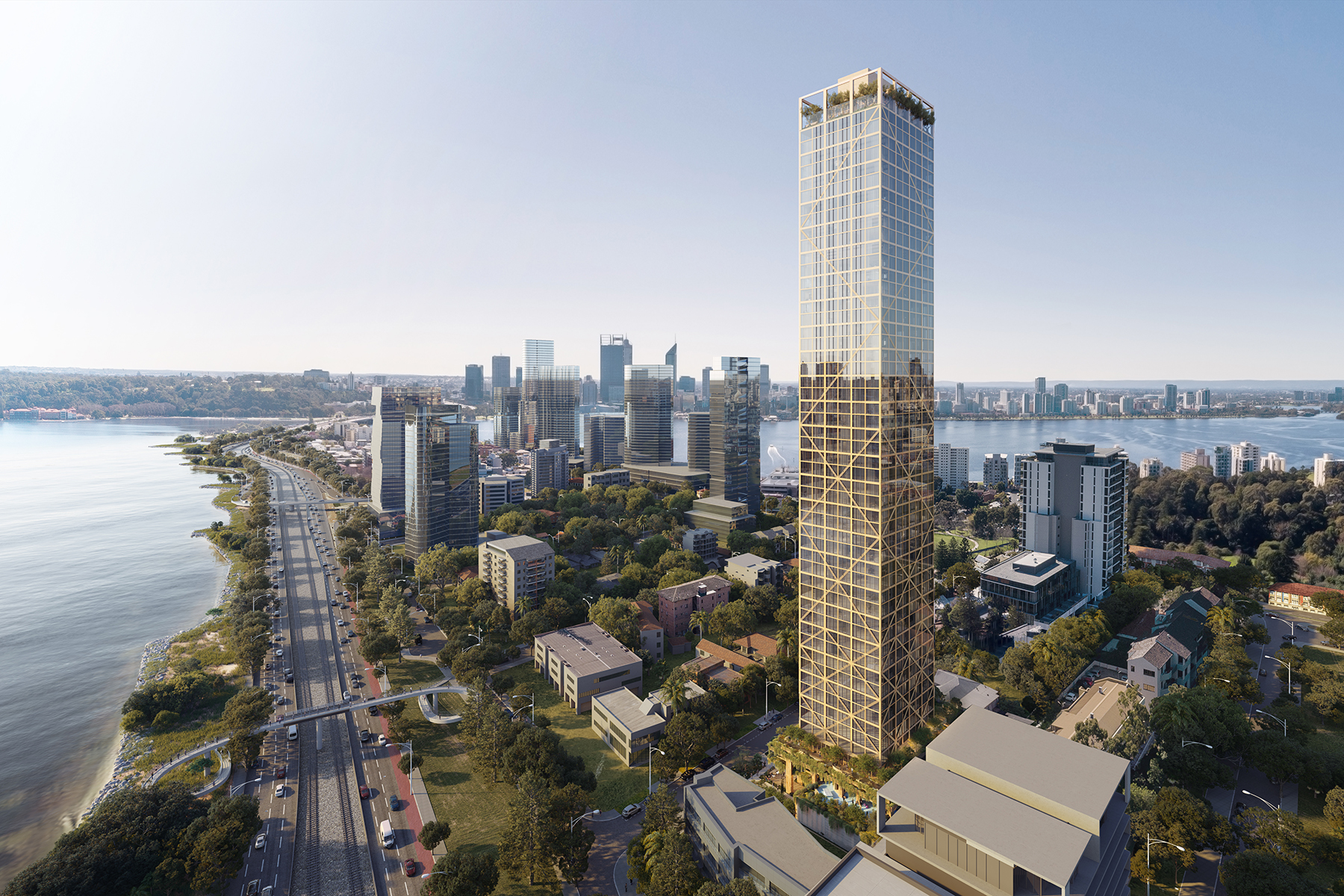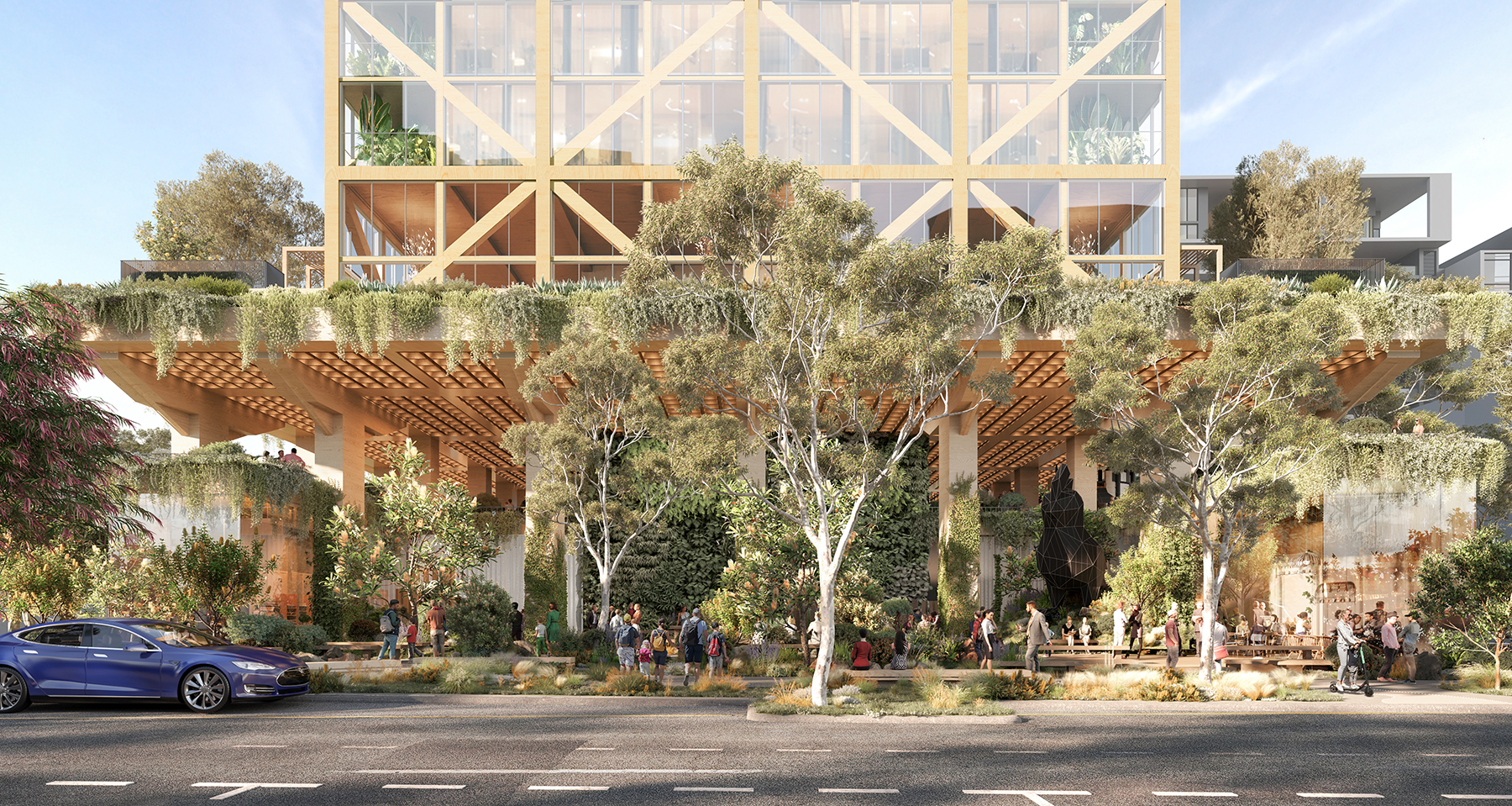By David Jen
Plans to build the world’s tallest hybrid-timber building recently received development approval, paving the way for the carbon-neutral tower, named C6, to move ahead in South Perth, Australia.

Designed by Melbourne-based Fraser & Partners, the 183 m tall structure’s use of timber will leave it carbon neutral at completion, while on-site solar power and zero-carbon commitments with off-site power plants will continue its sustainability goals afterward.
“To address the impacts of climate change, our imperative as architects is clear: How can we design the buildings needed for urban growth while balancing the environmental costs of their construction?” asks Reade Dixon, F&P director, in press material.
A timber-clad steel diagrid will surround a concrete core in C6, while glulam beams will support cross-laminated timber floors, according to project lead Lucas Menegazzo. The beams will also tie the building’s concrete columns back to the core.
Engineering firm NDY Structures will be responsible for the tower’s superstructure, while Vistek Engineers will handle the timber and connections, and Tmbr Consult will handle procurement.
The diagrid’s overcladding will provide a layer of fire protection, says Menegazzo.
“Timber is inherently safer in fire conditions compared to steel, and the building has been designed alongside Australia’s preeminent timber fire engineering expert James O’Neill,” he continues. For further protection, “the mass-timber beams have been oversized to allow a char layer to ensure structural integrity in the instance of a fire, and the CLT floors have been protected by two layers of fire-protective plasterboard.”
Research conducted by the Forest Products Laboratory showed that, during a fire, exposed mass timber develops an outer char layer that insulates and protects inner, unburned wood. Empirically obtained char rates from the study can be used to calculate the amount of outer, sacrificial char layer needed for exposed wood to obtain a three-hour fire resistance rating.

Timber, which will also be used in place of aluminum studs within the partition walls, will constitute 42% of the structure’s material. That amount of wood can be “sustainably regrown … allowing the building to sequester 10.5 million kilograms of carbon,” writes F&P in press material.
When complete, C6 will more than double the height of the Ascent apartment building in Milwaukee, which holds the title of world’s tallest mass-timber building, according to a February 2022 list from the Council on Tall Buildings and Urban Habitat. Designed by Korb + Associates Architects, the timber-concrete Ascent, at 86.6 m tall, edged out the previous record holder, the 85.4 m tall Mjøstårnet in Brumunddal, Norway.
The Mjøstårnet, however, continues to stand as the tallest all-timber building in the world.
In addition to residential apartments in C6, the 46,000 sq m building will include a wellness floor that includes a pool, gyms, and juice bar as well as an entertainment rooftop with a communal kitchen, lounge, and dining pods, according to Menegazzo.

At ground level, a 500 sq m podium and forecourt will be open for community use, including “an educational experience center, playground, public art, tower-to-plate restaurant and urban farming,” writes F&P. The project’s parking strategy also prioritizes bike sharing and includes a car-share fleet of 80 electric vehicles to further reduce its carbon emissions.
Solar fins integrated into the east and west facades of the building will generate up to 11% of the building’s energy needs while also shading apartments, says Menegazzo.
Finally, the project team is still exploring the use of greencrete for some elements, he continues. Greencrete replaces concrete aggregates with recycled content and industrial byproducts to lower the carbon impact of the concrete.
This article is published by Civil Engineering Online.



